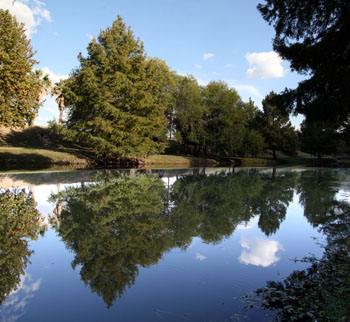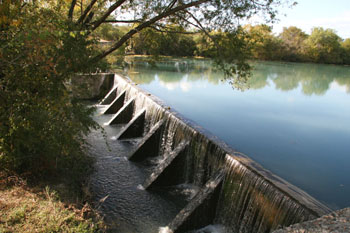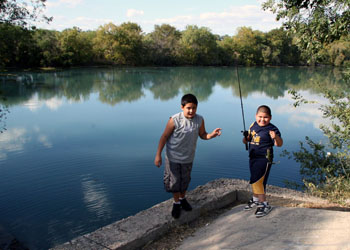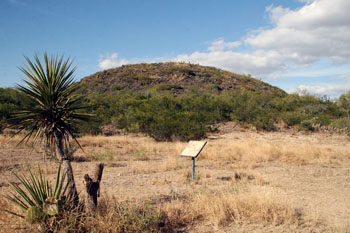 |
Four groups of Edwards Springs break out along a nine mile stretch of the Leona River south of Uvalde and are collectively known as Leona Springs. The name means Mountain Lioness. Brune (1981) noted that in the past most of the Springs broke out at higher elevations and could readily be identified; now, nearly all are beneath the surface of the River.
At left, the limpid waters of Las Moras Creek in Uvalde's Memorial Park make an ideal reflecting pool. |
Brune reported the first group of Springs emerged between the Southern Pacific Railroad and the Highway 140 bridge, with the largest one at the bridge. W. W. Arnett built a cabin here in 1852. In 1858 Reading Black and James Taylor used the waters to power a gristmill. In 1868 they were described as "abundant springs, 15 feet wide and six inches deep, running rapidly." The city pumped water from the Springs until 1893 when a well was drilled. The large spring at the 140 bridge was a popular stopping place for travelers and was shaded by a large oak tree that blew down in 1977.
The second group of Leona Springs is located 2.5 miles south of Uvalde in Fort Inge Historical Site County Park. Fort Inge was established in 1849 as part of a line of frontier forts that provided security patrols, escorts for freighters, and protection of setters from bandits and Indian raids. It served as an operations base for many years, including service as a Texas Ranger camp (Smith, 1993). There were a dozen buildings arranged around a rectangular parade ground, including a cut stone hospital and commisary building that was one of the first large stone structures built west of San Antonio. Today, only the building foundations remain. The Springs were submerged beneath an irrigation reservoir that now provides a recreational spot for fishermen and picnickers.
The third group of Leona Springs is located
five miles south of Uvalde, and Brune was guided there in 1979 by a neighboring landowner. He reported the Springs emerge beneath the Leona River, forming travertine dams over which beautiful waterfalls cascade. Brune also reported the fourth group of Leona Springs emerge under water just upstream of a washed out irrigation dam about nine miles below Uvalde.
|
 |
At Fort Inge Historical Site County Park, an old irrigation reservoir is now a popular site for fishing and picnics. The Park is open on weekends, and the entrance fee of $2 per person is collected on the honor system. |
|
 |
These fellows were having pretty good luck and were tossing back whatever they caught. |
|
 |
These men were having a picnic with their families below the dam. The Park offers a string of picturesque picnic sites along the River with tables and grilling facilities. |
|
 |
The Fort Inge site is dominated by Mount Inge, a 140-foot volcanic plug of Uvalde phonolite basalt.
|
|





